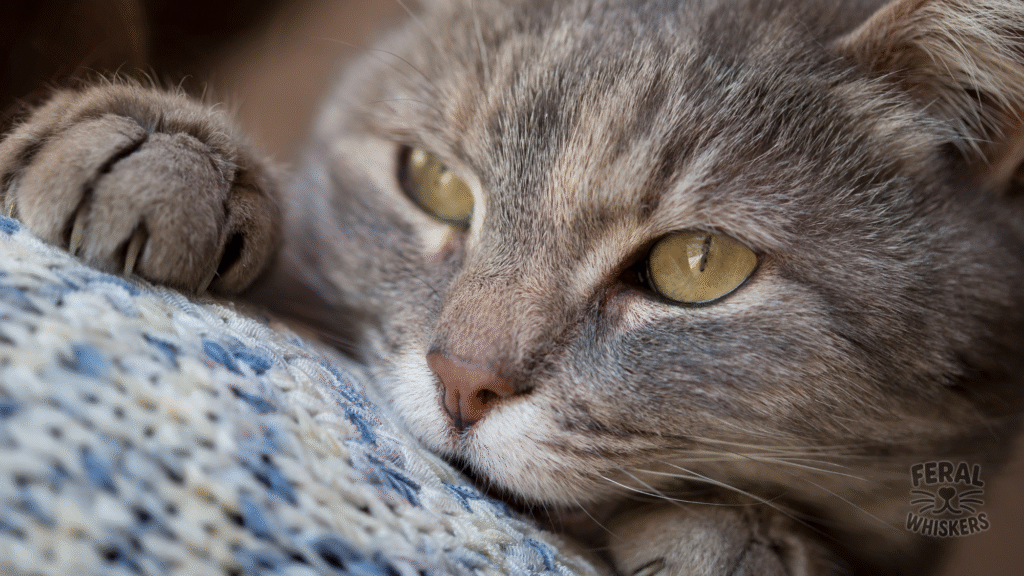📌 What Is a Cat’s Purr?

The purr is one of the most recognizable sounds in the animal kingdom — a gentle, rhythmic vibration produced in a cat’s chest and throat.
- Frequency range: Usually between 25–150 Hertz, which is low and soothing to the human ear.
- Where it comes from: Caused by rapid movement of the laryngeal (voice box) muscles, which open and close the glottis as the cat breathes in and out.
- Why it’s quirky: Cats purr not only when they’re content, but also when they’re stressed, in pain, or even dying — giving it an aura of both comfort and mystery.
👉 Humans tend to think “purr = happiness,” but the truth is more layered.
🦠 Why Do Cats Purr?
There are multiple fascinating theories and proven uses for purring:
1. Contentment & Comfort
- This is the most familiar scenario: your cat curled on your lap, eyes half-shut, purring steadily.
- Purring often means, “I’m safe, happy, and cozy.”
- In this sense, purring is bond-building, reinforcing positive social interactions.
2. Self-Healing Mechanism
- Studies show that purring frequencies (25–50 Hz) can promote bone density, healing, and tissue regeneration.
- Purring may help cats recover faster from injuries and maintain healthy bones despite long periods of inactivity.
- Some vets believe this is why cats bounce back so well from fractures compared to dogs.
3. Pain Relief & Self-Soothing
- Cats also purr when frightened, sick, or injured.
- In these cases, purring works like a self-comfort mechanism, similar to humans humming or rocking when anxious.
- It may even release endorphins, acting as a natural painkiller.
4. Kitten–Mother Bond
- Blind and deaf kittens rely on vibrations to find their mother’s milk supply.
- A mother cat purrs while nursing so kittens can feel her presence as vibrations.
- This is likely why cats continue to associate purring with safety and reassurance throughout their lives.
5. A Special Request Signal
- Scientists have observed cats can use a “solicitation purr” with a higher-pitched element to manipulate humans.
- Translation: “Feed me now.”
- Owners consistently respond to these urgent-style purrs faster than to normal ones (proof that cats are master manipulators 🐾).
🚨 When Is Purring a Red Flag?
Not all purrs are created equal. Watch for context clues:
- Happy purr: Relaxed body, slow blinks, tail tucked around body.
- Stress purr: Dilated pupils, flattened ears, crouched stance → cat may be anxious or in pain.
- Pain purr: Occurs at the vet, after injury, or while sick — sometimes mixed with restlessness or hiding.
👉 If your cat is purring outside of cozy moments (e.g., while limping, refusing food, or at the vet), it could be a distress or healing purr.
🌿 Holistic & Practical Insights
- Listen + Observe Body Language: Always interpret the purr alongside your cat’s body cues.
- Provide “purring spaces”: Soft blankets, heated beds, or your lap can trigger happy purrs and reduce stress.
- Encourage bonding: Stroking, gentle talking, and safe cuddling deepen the human-feline connection through shared purring.
- Vet awareness: Don’t assume a purring cat is pain-free at the clinic — vets train to read the body, not just the sound.
❓ FAQs
Q1: Why do cats purr when they’re about to die?
It may be self-soothing, easing their pain, or signaling to family members. Some believe it’s also a reflex they cannot “turn off.”
Q2: Can humans benefit from cat purring?
Yes — frequencies in the 25–50 Hz range are linked to lowering blood pressure, reducing stress, and even promoting healing in humans. Your cat may literally be therapeutic.
Q3: Do big cats (like lions or tigers) purr?
Only some small wild cats and certain big cats (like cheetahs) purr continuously. Lions and tigers can make similar sounds but can’t sustain a true rhythmic purr.
Q4: Can I tell the difference between happy purrs and stress purrs?
Yes. Happy purrs are often softer and steady, while stress purrs sound more rapid, sometimes erratic, and happen in less cozy contexts (vet, car ride).
💡 Final Thoughts
The cat’s purr is one of nature’s most intriguing mysteries — a mix of communication, comfort, and healing superpower.
✅ Key takeaway: Cats don’t only purr when they’re happy. They purr when they need comfort, when they seek help, and even when they’re healing themselves. Understanding the context is key to decoding what your cat is telling you.

